Find more information in the General Comments section of the assessment
Find more information in the Rating Validity tab of the assessment
- See More
- See More
- See More
- See More
- Good
- Adequate
- Marginal
- Weak
- Poor
 Passenger
Passenger
 Driver
Driver
 Rear Passenger
Rear Passenger
 Driver
Driver
 Car
Car
 Pole
Pole
 Rear Seat
Rear Seat
 Front Seat
Front Seat
- Good
- Adequate
- Marginal
- Weak
- Poor


Passenger
outboard
center
Fitted to the vehicle as standard
Not fitted to the test vehicle but available as option
Not Available
-
Infants up to 13 kg
-
Infants and toddlers up to 18 kg
-
Toddlers from 9 to 18 kg
-
Toddlers over 18 kg
Easy
Difficult
Safety critical
Not allowed
| Seat Position | ||||
|---|---|---|---|---|
| Front | 2nd row | |||
| Passenger | Left | center | Right | |
| Maxi Cosi Cabriofix (Belt) | ||||
| Britax Römer King Plus (Belt) | ||||
| Britax Römer Duo Plus (ISOFIX) | ||||
| Britax Römer KidFix (Belt) | ||||
| Maxi Cosi Cabriofix & EasyFix (Belt) | ||||
| Maxi Cosi Cabriofix & EasyFix (ISOFIX) | ||||
| BeSafe iZi Kid X3 ISOfix (ISOFIX) | ||||
| Maxi Cosi Pearl & Familyfix (ISOFIX) | ||||
| Britax Römer KidFix (ISOFIX) | ||||
Easy
Difficult
Safety critical
Not allowed
The HR-V scored maximum point for its protection of the 1½ dummy in the dynamic impact tests. In the frontal offset test, forward movement of the 3 year dummy, sat in a forward-facing restraint, was not excessive, although chest and neck decelerations were marginally elevated. The front passenger airbag can be disabled to allow a rearward-facing restraint to be used in that seating position. Clear information is provided to the driver regarding the status of the airbag and the system was rewarded. All of the restraint types for which the HR-V is designed could be properly installed in the car, with the exception of the Group I universal restraint, which was not stable when installed in the rear centre position.
- Good
- Adequate
- Marginal
- Weak
- Poor

Head Impact 16.6 Pts
Pelvis Impact 3.6 Pts
Leg Impact 6.0 Pts
The HR-V scored maximum points for the protection provided by the bumper to pedestrians' legs. Protection of the pelvic region was more mixed with good and poor results recorded. The protection provided to the head of struck pedestrian ranged predominantly from marginal to good, with some weak and poor results recorded on the stiff windscreen pillars.
- Good
- Adequate
- Marginal
- Weak
- Poor
| Speed Limit Information Function | Camera based |
| Warning Function | System advised |
| Speed Limitation Function | System advised |
| System Name | VSA | |
| Performance | ||
| Vehicle Yaw Rate @ COS + 1.00 s | 0.6% | meets ECE requirements |
| Vehicle Yaw Rate @ COS + 1.75 s | 0.51% | meets ECE requirements |
| Lateral Displacement @ BOS + 1.07 s | 3.43 m | meets ECE requirements |
| Applies To | All seats | ||
| Warning | Driver Seat | Front Passenger(s) | Rear Passenger(s) |
| Visual | |||
| Audible | |||
|
|||
| System Name | Lane Departure Warning |
| Type | Lane Departure Warning |
| Operational From | 65 km/h |
| Warning | Audible & Visual |
| Performance | |
|
LDW Confirmation Test
|
Pass |
Electronic stability control is standard on the HR-V together with a seatbelt reminder for the front and rear seats. A lane departure warning system and a speed assistance system are both options which are expected to be widely fitted, so qualified for assessment by Euro NCAP. An autonomous emergency braking system which operates at highway speeds is not currently available.
- Specifications
- Safety Equipment
- Videos
- Rating Validity
Specifications
Tested Model Honda HR-V 1.6 'ES', RHD
Body Type - 5 door hatchback
Year Of Publication 2015
Kerb Weight 1259kg
VIN From Which Rating Applies - all HR-V's
Class Small Family Car
Safety Equipment
Note: Other equipment may be available on the vehicle but was not considered in the test year.
Fitted to the vehicle as standard
Fitted to the vehicle as option
Not fitted to the test vehicle but available as option
Not Available
Not Applicable
Videos
Rating Validity






Find more information in the General Comments section of the assessment
 Share
Share
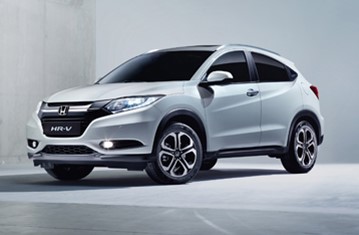
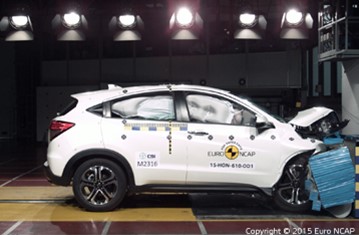
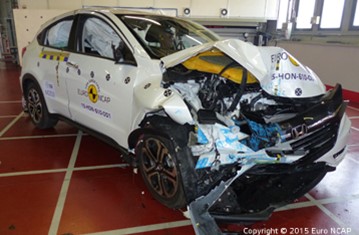
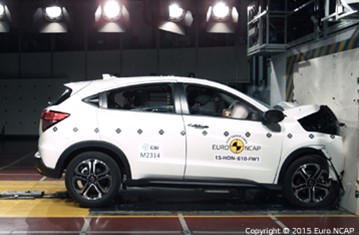
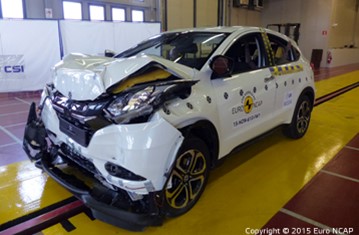
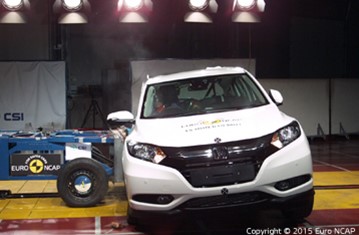
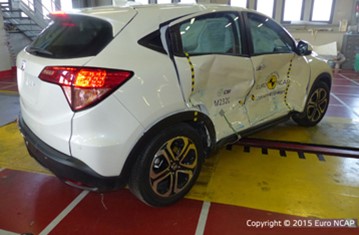
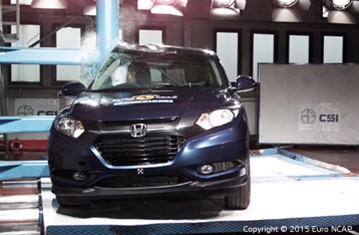
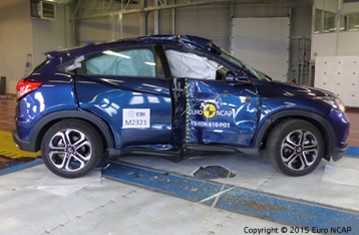



The passenger compartment remained stable in the frontal offset test. Dummy readings indicated good protection of the knees and femurs of both the driver and passenger. Honda showed that a similar level of protection would be provided to occupants of different sizes and to those sat in different positions. In the full width rigid barrier test, protection of the driver was good, apart from the chest, protection of which was adequate. Adequate protection was provided to the neck and chest of the rear passenger dummy, and good protection to the head and femurs/pelvis. The HR-V scored maximum points in the side barrier test, with good protection of all body regions. Even in the more severe side pole impact, protection was good for all critical parts of the body. The seats and head restraints provided marginal protection against whiplash in the event of a rear-end collision. A geometric assessment of the rear seats indicated a good level of whiplash protection for occupants of those seats. The HR-V has a standard-fit autonomous emergency braking system which provides additional protection at the low speeds at which many whiplash injuries are caused. The system performed well in Euro NCAP's tests but the score could not be included in the assessment as the front seat whiplash protection was not rated as good.